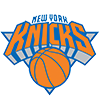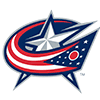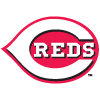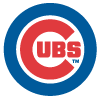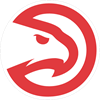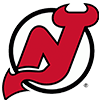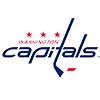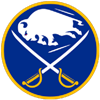Before we dive into the meat of this article, I want to provide a refresher course for those about to face crucial keeper decisions or their first dynasty draft in the season. Here are some past articles dealing with important draft/auction prep topics:
Deciding which players to keep
Determining inflation and your spot in the success cycle
-----
If there's one piece of fantasy advice which is consistent across all leagues and even sports, it's "Know your league rules". Scoring (OBP or BA?), roster sizes and shapes (one catcher or two?), player acquisition rules (waivers or FAAB? Trade restrictions?), even something as fundamental as how many teams finish in the money each season can affect your strategy and decision-making.
What happens when the rules of the sport your fantasy game is based on change, though?
For this first time in recent memory – really, for the first time since the introduction of the DH in 1973 – MLB has made significant changes to its rules regarding how teams can construct and manage their rosters. That can't help but have a trickle-down effect on how fantasy GMs should approach building their own rosters, and it's worth considering the different kinds of impacts those changes might have before you get to the draft table. While the focus of this column is specifically on keeper and dynasty leagues, GMs in redraft formats will also need to be aware of the new environment around them.
While we're at it, I'm
Before we dive into the meat of this article, I want to provide a refresher course for those about to face crucial keeper decisions or their first dynasty draft in the season. Here are some past articles dealing with important draft/auction prep topics:
Deciding which players to keep
Determining inflation and your spot in the success cycle
-----
If there's one piece of fantasy advice which is consistent across all leagues and even sports, it's "Know your league rules". Scoring (OBP or BA?), roster sizes and shapes (one catcher or two?), player acquisition rules (waivers or FAAB? Trade restrictions?), even something as fundamental as how many teams finish in the money each season can affect your strategy and decision-making.
What happens when the rules of the sport your fantasy game is based on change, though?
For this first time in recent memory – really, for the first time since the introduction of the DH in 1973 – MLB has made significant changes to its rules regarding how teams can construct and manage their rosters. That can't help but have a trickle-down effect on how fantasy GMs should approach building their own rosters, and it's worth considering the different kinds of impacts those changes might have before you get to the draft table. While the focus of this column is specifically on keeper and dynasty leagues, GMs in redraft formats will also need to be aware of the new environment around them.
While we're at it, I'm also going to keep the mental train of thought going and consider the potential impact on fantasy leagues of some of the other changes rumored to be coming down the road. If Rob Manfred steps up to a podium somewhere and announces that a program called Skynet will be calling balls and strikes in 2023, you'll want to be prepared, and not just for the coming apocalypse.
26-man rosters / September rosters
There are two big changes for 2020 – the three-batter minimum for pitchers, and the addition of an extra in-season roster spot. We'll start with the latter. Big-league clubs will now be allowed to carry 26 players on their usual roster, with the addition of a temporary extra one for doubleheaders (now the 27th man). That 26-man roster will also be limited to a maximum of 13 pitchers, a number most teams have been carrying in recent years anyway, so in most cases the extra roster spot will be going to a position player.
Now, I know what you're thinking. How useful is a 13th position player going to be in fantasy? It'll be a pinch-runner/fifth outfielder type, or a pinch-hitting specialist who gets two ABs a week, or even (shudder) a third catcher. It's not a player I'll ever have to worry about for my own team's roster. Well, maybe. And then again, maybe not.
My general rule of thumb is, if you want to see what's coming down the pike in the majors, you look to see what the Rays are up to. And what I see when I look over the Tampa roster this spring is platoons. Platoons everywhere! Looking at their depth chart, they've got six plausible outfield options – three righties (Hunter Renfroe, Manuel Margot and Jose Martinez) and three lefties (Austin Meadows, Kevin Kiermaier and Yoshi Tsutsugo). Catcher could be a split between Mike Zunino (RH) and Michael Perez (LH). The infield has the left-righty combo of Daniel Robertson and Joey Wendle, either as backups or potentially even at 3B most of the time if righty-hitting Yandy Diaz is in a floating 3B/1B/DH role – although Diaz and Tsutsugo could also be a de facto platoon between those spots, if Diaz isn't in a clear platoon at 1B with either Ji-Man Choi or Nate Lowe. Wander Franco will push himself into the picture sooner or later, but he's a switch hitter, and if he bumps Brandon Lowe off second base, Lowe could become a floater as well. In fact, the only spot on the diamond that doesn't offer a clear platoon possibility is shortstop, where Willy Adames' glove should make him a fixture. Just as they've done with their pitching staff, the Rays have assembled a group of position players designed for maximum possible flexibility. Rather than having four scrub bench players behind nine starters, they'll potentially have 12-13 guys who could all see enough playing time to make them useful in AL-only formats and deeper mixed leagues.
If other teams follow suit, we could see a 1980s-like return to the glory days of the platoon, when guys like Garth Iorg and Rance Mulliniks would Voltron themselves into one decent third baseman for the Blue Jays. (No, kids, I did not just make up those names.) That would have wildly different impacts on different kinds of leagues – in those really deep mixed or single-league formats, it would increase the depth of the overall hitter pool, as more guys see the equivalent of 3-4 starts a week. In shallower mixed formats, however – your standard 12-team or even 15-team leagues – it would put a premium on the players who aren't platooning. Just as the value of established aces has gone up in an era where fewer of them hit old volume benchmarks like 200 innings, hitters who reach, say, 650 plate appearances could become their equivalents. It would also make an auction strategy like Stars and Scrubs a lot easier to manage, when the 'scrubs' are set to get more playing time and be more productive.
Another change that could have an impact on GMs in keeper and dynasty leagues is the accompanying reduction in September roster size. Up until last year, teams could promote any and all members of the 40-man roster to the bigs in September. While it didn't happen often, this would occasionally create opportunities to snag promising prospects in FAAB who would pay off the following season. Now, September roster sizes will be limited to 28 – teams can only promote two additional players for the stretch run, not up to 15. In all likelihood, those same top prospects will be the prime candidates for such promotions, but we could see scenarios where teams elect to bring up Quad-A types and big-league retreads for depth instead, especially if they're chasing a playoff spot.
There is one more wrinkle to the new roster size rules that should be addressed, and that's two-way players. With the 13-pitcher limit comes an accompanying restriction on how often teams can use a position player on the mound. The restrictions aren't all that restrictive – something like 15 percent of last season's position-player mound outings would not have been allowed under the new rules – but it's still an obstacle teams would rather not have to deal with. In their largesse, MLB has created a loophole and will allow position players to be designated as a "two-way player" if they meet certain thresholds first: they've pitched in 20 games and seen at least three plate appearances in 20 games, in either the current or prior big-league season. Much like fantasy position eligibility, once a player reached those marks, they will carry the two-way designation over into the following season.
That all sounds great, but here's the list of players who qualified in 2019:
(crickets)
Yep. Nobody qualified. MLB made a special exemption for Shohei Ohtani, grandfathering him from 2018, but that's it to begin 2020. Michael Lorenzen, for instance, only played in eight games last year (all in September) where he saw three or more PAs.
Now, since there's no restriction on how often pitchers can hit or play in the field, the practical impact will be for every reasonably likely qualifier to be initially listed as a pitcher. If Brendan McKay eventually sees enough time as a hitter to qualify, maybe the Rays shift him over to be a two-way position player when they want to squeeze an extra arm into the bullpen. Someone like Jake Cronenworth, on the other hand, might actually be hurt by this rule. If he doesn't play well enough as an infielder to make the roster, are the Padres really going to carry him for months as a rarely used 13th pitcher/bench player until he earns two-way status?
Official two-way players are a neat idea, but under the current implementation it's not going to be a big factor for big-league organizations, or for fantasy rosters.
Three-Batter Minimum
Most of the chatter about MLB's changes has focused on the new three-drink batter minimum for pitchers. Per the rule, when a pitcher enters the game, they must face at least three batters before getting replaced. Goodbye LOOGYs, goodbye constant trips to the mound in the middle of the late innings, hello quicker pace and a better brand of baseball. Right?
Err, well...
The basic description of the rule doesn't include two rather important caveats. The first, and the one you'll probably see in action most often early in the season, is that a pitcher can be replaced if he finishes off an inning. So LOOGYs and groundball specialists and the like will still have their place – it will just be to end a frame, not work in the middle of it. A right-handed reliever will be able to begin an inning, face three guys and get a couple of outs, and then the manager will turn to his trusted lefty reliever to shut down Joey Gallo or whoever. If they do their job, a brand new guy can still begin the next inning. The number of mid-inning switches will be reduced, but they'll still happen.
The other loophole is a more insidious one, and one which Max Scherzer helpfully highlighted last week: a pitcher can be removed before three batters if they're hurt. Or at least, if they say they're hurt. Here's Mad Max painting a vivid picture:
"It's very plausible that, when it's convenient, somebody just could come up lame because the umpires are always going to side on player health, and they have to," Scherzer said. "If they were to force a guy to pitch injured, now that screams lawsuit, right? It won't happen. We're going to be talking about this over and over again."
I'm sure Scherzer is just being paranoid. I mean, it's not like there's an organization out there with a reputation for cheating and bending the rules every chance it gets.
At any rate, at least to begin the 2020 season, the three-batter minimum probably won't have a big impact on how teams construct their bullpens.
Universal DH?
Now we're looking a little further ahead. Rumors that the NL will finally adopt the designated hitter have been picking up steam in recent years, and with a new CBA potentially bringing major changes with it in 2021, a universal DH could be high on the list of things to be added. As we've seen in the AL, the number of teams that have one defensively limited slugger such as a Nelson Cruz or Edwin Encarnacion to fill that role are dwindling, and instead organizations are using the DH as a way to give regulars a half-day off as they rotate through the spot.
However, that isn't going to stop teams from trying to find the next Cruz or EE. The focus here for dynasty owners should be on blocked minor-league first basemen or position-less 'pure hitter' types – guys who, in the past, would have "needs to be traded to the AL" in their writeups, like Jose Martinez or Willie Calhoun. Consider, for instance, the case of Bryce Ball, an Atlanta prospect who's generated a bit of buzz this spring. Right now, being stuck behind Freddie Freeman on the organizational depth chart would seem to mark Ball as a guy you don't need to worry too much about unless he gets dealt. If the NL gets the DH within the next few years, though, Ball could be ready for the majors just in time to get first crack at the job. On the flip side, the Colorado tenure of a player like Charlie Blackmon could also be extended by a couple of seasons if there's one more slot on the defensive spectrum for them to fall into as get older (because heaven forbid the Rockies give a chance to a prospect like Michael Toglia unless they absolutely have to).
Stocking up now on at least a couple of prospects who don't seem to be good fits for the NL, even though they're in NL systems, could pay big dividends if the NL ceases to be any different than the AL.
Robo-umps? (Rise of the Machines)
Whether you like the idea or not, it seems inevitable. Independent leagues and minor-league parks are being set up to accommodate the technology necessary to have ball/strike calls be automated, and once that technology gets perfected, or at least rises to a certain level of efficiency and accuracy, it'll come to the majors. The current CBA between the league and umpires, which already allows for the testing of robo-umps, lasts through 2024, and the new deal will almost certainly include taking the responsibility of calling balls and strikes out of puny human hands.
Here's the rub: if ball/strike calls get automated, then pitch framing – the art of fooling human eyes into thinking a pitch was actually in the strike zone – immediately becomes an obsolete skill.
In recent years, big-league teams have put increased weight on having good pitch framers behind the plate, sacrificing offense in most cases to get it. Occasionally, a team with a player like Gary Sanchez will want his bat in the lineup and hope to teach him to become an adequate receiver. At the opposite end of the spectrum, Austin Hedges got 100 more plate appearances than Francisco Mejia last year despite having an OPS nearly 200 points lower.
If framing is no longer a valuable skill, a catcher's defensive responsibilities will be reduced essentially to throwing out base stealers (another aspect of the modern game in decline) and blocking pitches in the dirt. There will be some consideration for guys who can call a good game or set a good target, but for the most part, the reasons to trade offense for defense behind the plate will disappear.
Which means all those big-hitting catchers with questionable defensive reputations, who at the moment are expected to have to move out to another position if they want to be a big-league regular, will suddenly have much clearer paths to the Show.
Just as with the universal DH, robo-umps should in theory create more job openings for bat-first players. Imagine it! A fantasy world where catcher isn't a blighted hellscape, and there are enough useful offensive contributors for everybody! Actually, you don't have to use your imagination, because this kind of evolution is something we've seen before in baseball. There was a time when shortstop was considered a glove-first position, and whatever offense teams got from the six was a bonus. Mario Mendoza may have become an inadvertent household name because of his anemic career batting average (.215, to be precise), but he also got nearly 1,500 plate appearances in the bigs thanks to his slick defense. Mark Belanger became a legend in Baltimore and played over 2,000 career games, winning eight Gold Gloves along the way, and he was only a league-average hitter (OPS+ of exactly 100) once in 18 seasons. Forty years later, and a shortstop who can pick it but can't contribute with his bat is lucky to hang onto a spot at the end of the bench. Maybe, in anticipation of the same change coming behind the plate, it's time we stop calling it the Mendoza Line and rebrand it the Mathis Line, after Jeff Mathis and his career .195/.254/.299 line.
If there's a countervailing force at work here, it might be baseball's attempts to revive the running game. Beginning this season in the low minors, the rules for pickoff attempts will be modified. Pitchers, particularly southpaws, will no longer be allowed to kick with their leg and then decide in midair if they want to go to first base or the plate (the classic Andy Pettitte-style pickoff). Instead, they'll have to clearly step off the rubber before throwing to a base. Per Baseball America, when they implemented this change in the independent Atlantic League last year, stolen base attempts jumped more than 0.5 per game, while the success rate ticked up from 75 percent to 81 percent. If that kind of impact remains all the way up the ladder, it could encourage teams to run more once the new rule gets introduced in MLB, and thereby encourage teams to focus on deploying catchers with rockets for arms. The reasons for the decline in steals has less to do with raw success rate and more to do with the value of an extra base in a high-octane offensive environment compared to an out. With teams now expecting homers from almost anywhere in the lineup, first base is de facto scoring position. Making it tougher to pick runners off and keep them close wouldn't change that.










